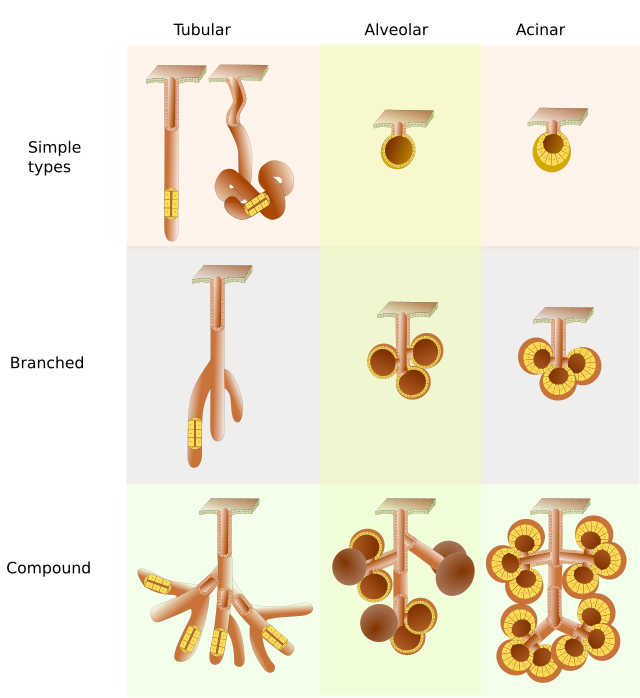Atlas of Plant and Animal Histology

G lands can be classified according to the morphology of the secretory part. Tubular glands show tube-like secretory portions. The secretory part may be not straight but curved or convoluted. Alveolar glands contain secretory parts resembling rounded bags with wide inner free space. Acinar glands show pear-like secretory portions with wide base and little inner free space.
I ndependently of the gland morphology, simple glands show an unbranched excretory duct and one secretory unit. Simple branched glands are formed by several secretory units that release their products into the same excretory duct.
T ypical examples of simple glands are the sweat glands of the skin, which are tubular. Peri- and paraurethral glands are simple acinar glands. In the stomach, simple branched acinar glands (mucous glands of the stomach cardia) and simple branched tubular glands (mucous glands of the pylorus) can be found.
C ompound glands are the more complex glands. The excretory duct is branched and may contain many secretory units. The main excretory duct releases the secretory product to the body surfaces and gives rise to branches known as interlobular ducts. Every interlobular duct collects secretory products from the gland lobules. Lobules can be observed without a microscope. Inside every lobule, there are intralobular ducts that can also be branched. In the lobule, the secretory units of the gland are found at the end of the smaller intralobular ducts. Connective tissue can be found around ducts and secretory units, where blood vessels and nerves can also be found.
E xamples of compound glands: exocrine pancreas is acinar compound gland; Brunner glands of the duodenal submucosa are tubular compound glands; mammary gland, lacrimal gland and submandibular salivary gland are tubulo-acinar compound glands.